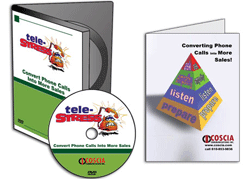Two good keynotes do not a conference make. They will really help, of course, but the meat of our High-Performance Buildings event is the simultaneous two tracks of sessions.
We’ll be running a Technology & Innovation track in one space, and a Design & Delivery track in another. As always, you can move between tracks over the two days as you like. Here’s the one-page rundown.
TECHNOLOGY & INNOVATION
Tuesday morning. This track’s morning presentations focus on lighting and electrical systems. These speakers will illuminate new possibilities in open lighting controls technologies, wireless lighting controls, and electrical energy management for integration into BAS.Tuesday afternoon. After lunch, the track’s focus is controls. Analytics as a tool to improve performance, the role of incentives, and the amusingly titled, “Pushing IP connectivity to the Edge: My VAV Box Just Tweeted Me!” reflect both the expanding universe of building system possibilities and the occasional unsettling feeling that universe can create in users.
This segment ends with a forum on optimizing controls, hosted by Jeff Seewald, P.E., of our co-presenter, Building Intelligence Group.
Following a quick break we’re back for the late afternoon and the Heating, Cooling & Ventilation session. The four presenters will engage you about the following.
- Thermal energy storage
- Fresh perspectives on dedicated outdoor air
- Hydronic heating systems with condensing boilers and gas absorption heat pumps
- Liquid desiccant energy and heat recovery
- Remote building energy performance analysis
- The economics of remote diagnostics<./li>
- Real-time energy monitoring and continuous benchmarking
DESIGN & DELIVER
Meanwhile, in this corner, the Tuesday morning session will weigh in on the fight to improve performance in existing buildings, including some time on the ways that improving IAQ can improve the building’s HVAC cost of operation.After lunch, we jump into building systems, with a few topics covering a lot of ground to help you tweak what you have. Thermal performance requirements of sustainable building envelope design, technology and best practices for saving energy with pumps, and integrating solar photovoltaics within HVAC rooftop units are all on tap. We’ll finish this part off with a forum on improving existing buildings.
Moving to high-performance operations for the rest of the afternoon, this track looks at how to better design for operations, making money through better-integrated facility operations, and potential savings through steam trap monitoring.
We start Wednesday by digging into demand response (DR) and Smart Grid strategies. Speakers look at the benefits of automation and mobile DR technologies for facility management and then a primer on maximizing your current energy assets before turning to look at breakthrough energy optimization technologies for boosting savings and reducing your peak loads.
After a forum on integrating smart grid into your building or buildings, we finish the day by opening things up even further with an interactive workshop/discussion on the topic, hosted by our experienced friends at Building Intelligence Group.
PERFORMANCE PICK 'EM
As I finished up those descriptions, two things occurred to me. First, that’s kind of an overwhelming list of technologies. Better than facing the overwhelming pressures to contain costs using old technologies? Well, yeah, but I don’t deny it’s a lot to throw at you.But the second thought was this: You’re not supposed to take it all home and do it. Nobody would, or would even need to. Instead, the idea is to find one, maybe two ideas that could work for you, in your facility, in your own set of circumstances. That’s all it takes, and I guarantee you that any idea in either track, carefully chosen and well implemented, will generate savings way, way beyond your registration and travel costs.
Throw in some great Q&A and it’ll be a worthwhile two days. Register atwww.esmagconference.com, and I’ll look forward to seeing you there.ES








